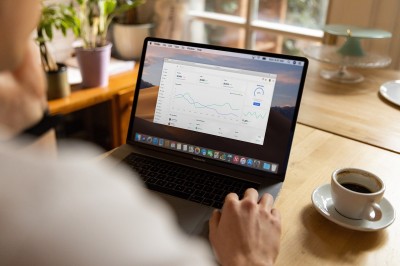How Computer Vision Can Help Robots Navigate the Real World
Asrobotics technology continues to develop, computer vision is becoming anincreasingly important component of robot navigation. By understanding how tointerpret the images captured by cameras, robots can more easily navigate theirsurroundings and interact with objects in the real world. In this article, wewill discuss the basics of computer vision and how it can be used to improverobotics performance.
Computervision is the process of extracting information from images. This can be donethrough a variety of methods, including image recognition and object detection.By understanding how to interpret the data captured by cameras, robots can moreeasily identify obstacles and navigate around them. Additionally, computervision can be used to track objects and people, allowing robots to betterinteract with their surroundings.
Thereare a number of benefits to using computer vision in robotics. First, it cangreatly improve the accuracy of robot navigation. By understanding the layoutof its surroundings, a robot can more easily avoid obstacles and reach itsdestination. Additionally, computer vision can be used to identify objects andpeople, allowing robots to better interact with their surroundings.
Additionally,computer vision can be used to track objects and people, allowing robots tobetter interact with their surroundings. Finally, computer vision can be usedto improve the safety of robotics systems by providing a mechanism fordetecting potential hazards.
Thereare several use cases where computer vision can enhance robotic applications.
IndustrialRobotics
Inindustrial robotics, computer vision can be used to track objects and people inthe work environment. This information can be used to improve safety byavoiding collisions, as well as increasing efficiency by ensuring that therobot is working in the most efficient path.
ServiceRobotics
Inservice robotics, computer vision can be used for tasks such as objectrecognition and navigation. For example, computer vision can be used toidentify a specific type of object, such as a chair, and then navigate to it.Additionally, computer vision can be used to track people, allowing the robot toprovide them with assistance or direction.
HealthcareRobotics
Inhealthcare robotics, computer vision can be used for tasks such as monitoringpatients and assisting with medical procedures. For example, computer visioncan be used to track the movement of patients and identify changes in theircondition. Additionally, computer vision can be used to assist with medicalprocedures, such as guiding a surgical robot.
Searchand Rescue Robotics
Insearch and rescue robotics, computer vision can be used to locate people indifficult or dangerous environments. For example, computer vision can be usedto identify people in a collapsed building or navigate through a hazardousarea.
AgricultureRobotics
Additionally,computer vision can be used in agricultural robotics applications such as cropmonitoring and yield estimation. In crop monitoring, computer vision can beused to capture images of crops and then analyze them for signs of stress ordisease. This information can then be used to improve the efficiency ofagricultural operations. In yield estimation, computer vision can be used toestimate the amount of crop that will be produced. This information can be usedto optimize agricultural operations and ensure that the correct amount of foodis produced.
Self-Driving& Last Mile Robotics
Computervision is also playing an important role in self-driving and last mile roboticsapplications. In self-driving robotics, computer vision is used to interpretdata from sensors and then make decisions about how to navigate theenvironment. This information is used to control the robot and ensure that itarrives at its destination safely. In last mile robotics, computer vision isused to identify and track people and objects in the environment. Thisinformation is used to ensure that the robot safely delivers its payload to thecorrect destination.
As youcan see, computer vision can be used in a variety of robotics applications toimprove navigation, safety, and efficiency. Computer vision is a rapidlygrowing field with a wide range of applications. As robotics technologycontinues to develop, computer vision will become an increasingly importantcomponent of robot navigation. By understanding how to interpret the imagescaptured by cameras, robots can more easily navigate their surroundings andinteract with objects in the real world.
Last butnot least, it is important to know that in order to unlock many of these robotapplications, AI and computer vision algorithms need training data. You have afew options to get your hands on robotic training data. You can either pay fora dataset, create your own, or use a public domain dataset. Bounding.ai can be helpful in this search,with free and paid datasets for AI training and computer vision. Also, you cancreate your own training data if you prefer or your specific application is notavailable off-the-shelf.
Inconclusion, robotics has immense potential. With the help of computer vision,robotics can be used in a number of different ways to make our lives easier.Whether it’s in healthcare, search and rescue, or even agriculture, computervision can help robotics become more efficient while reducing risks. As thefield of robotics continues to grow, so too will the need for computer visiontraining data. Thanks for reading!

























